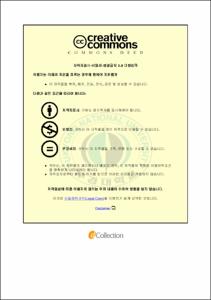SiC 세라믹스의 표면 거칠기에 따른 강도특성
- Alternative Title
- Bending strength property of SiC composite ceramics depending on surface roughness
- Abstract
- In this study, according to effect of surface roughness, change of strength was analyzed. Typically, when ceramic applies to its field, crack on surface adversely affects mechanical property because of crack. End of crack on surface is very pointed and stress concentration occurs at end of crack. So when ceramic is grinded, grinding must be conducted until polished plan is made.
After hear treating each ceramic atoptimum healing temperature for crack healing, if we can get ceramic having higher or similar strength than smooth specimen without polishing by 6μm grinding plate, cost of machiningcan be reduced substantially. As stated earlier, non polished smooth specimen and other specimens of SAY which were grinded at each grinding plate, 125μm, 40μm, 6μm, were hear treated at optimum healing temperature 1373K during 1hour to 10hours. And then specimens heat treated during 1hour to 10hous were used for getting strength property. And specimens spread with SiO2 colloid on surface of specimen were also heat treated at optimum healing temperature 1373K during 1hour and those specimens were also used to study on strength property.
In accordance with effect of surface roughness, strength property at room and high temperature were researched. When grinding surface of specimen, grinding time, pressure, and grinding plate were changed for getting effect of surface roughness on strength property. And then 3point bending test was conducted at room and high temperature.
After heat treating specimens, strength and mechanical property of smooth specimens increased but defect such as crack on surface of specimen were not destroyed perfectly. And strength improved by heat treatment was also limited. Generally, surface roughness affects bending strength. Therefore, the smaller surface roughness is, the higher bending strength become. But bending strength of specimens that were grinded by 40μm grinding plate and heat treated during 1 hour is higher than bending strength of specimens that were grinded by 6μm grinding plate and heat treated during 1 hour.
Based on earlier experiments, crack by machining can be improved by using crack healing process without polishing by 6μm grinding plate.
- Issued Date
- 2011
- Awarded Date
- 2011. 2
- Type
- Dissertation
- Publisher
- 부경대학교
- Alternative Author(s)
- Kim, Eun Sun
- Affiliation
- 부경대학교 대학원
- Department
- 대학원 기계공학학ㆍ연협동과정
- Advisor
- 남기우
- Table Of Contents
- 1. 서론 1
2. 이론적 배경 4
2.1 탄화규소 4
2.2 세라믹스 재료의 취성 및 개선방법 5
2.2.1 미세구조의 제어 5
2.2.2 비파괴 검사 7
2.2.3 균열치유(Crack-healing) 7
2.3 고온강도특성 8
2.4. 세라믹스의 표면처리 9
2.4.1 세라믹스의 표면처리 필요성 9
2.4.2 결함의 근본적인 제거 10
2.5. 표면 거칠기 측정 11
2.5.1 표면 거칠기의 정의 11
2.5.2 표면 거칠기 측정의 필요성 11
2.5.3 표면 거칠기의 표시 12
2.5.4 표면구조 14
2.5.5 표면 거칠기의 측정방법 16
3. 재료 및 실험 방법 19
3.1 재료 및 분말 혼합방법 19
3.2 SiO2 nano-colloid 제조 19
3.3 소결(Sintering) 21
3.4 세라믹스의 가공 21
3.5 실험방법 22
3.5.1 밀도측정 22
3.5.2 균열 치유를 위한 열처리 조건 22
3.5.3 굽힘 강도 시험 22
3.5.4 조직관찰 및 표면성분분석 23
4. 결과 및 고찰 27
4.1 미연마재의 강도 특성 27
4.2 125 연마판에서 SAY의 강도 특성 34
4.3 40 연마판에서 SAY의 강도 특성 37
4.4 표면 거칠기에 따른 상온에서의 강도 특성 41
4.5 표면 거칠기에 따른 SiO2 colloid에 의한 상온 강도 특성 45
4.6 표면 거칠기에 따른 고온 강도 특성 53
4.7 표면 거칠기에 따른 SiO2 colloid에 의한 고온 강도 특성 54
5. 결론 59
참고문헌 61
- Degree
- Master
- Appears in Collections:
- 대학원 > 기계공학학연협동과정
- Files in This Item:
-
-
Download
 SiC 세라믹스의 표면 거칠기에 따른 강도특성.pdf
기타 데이터 / 9.58 MB / Adobe PDF
SiC 세라믹스의 표면 거칠기에 따른 강도특성.pdf
기타 데이터 / 9.58 MB / Adobe PDF
-
Items in Repository are protected by copyright, with all rights reserved, unless otherwise indicated.